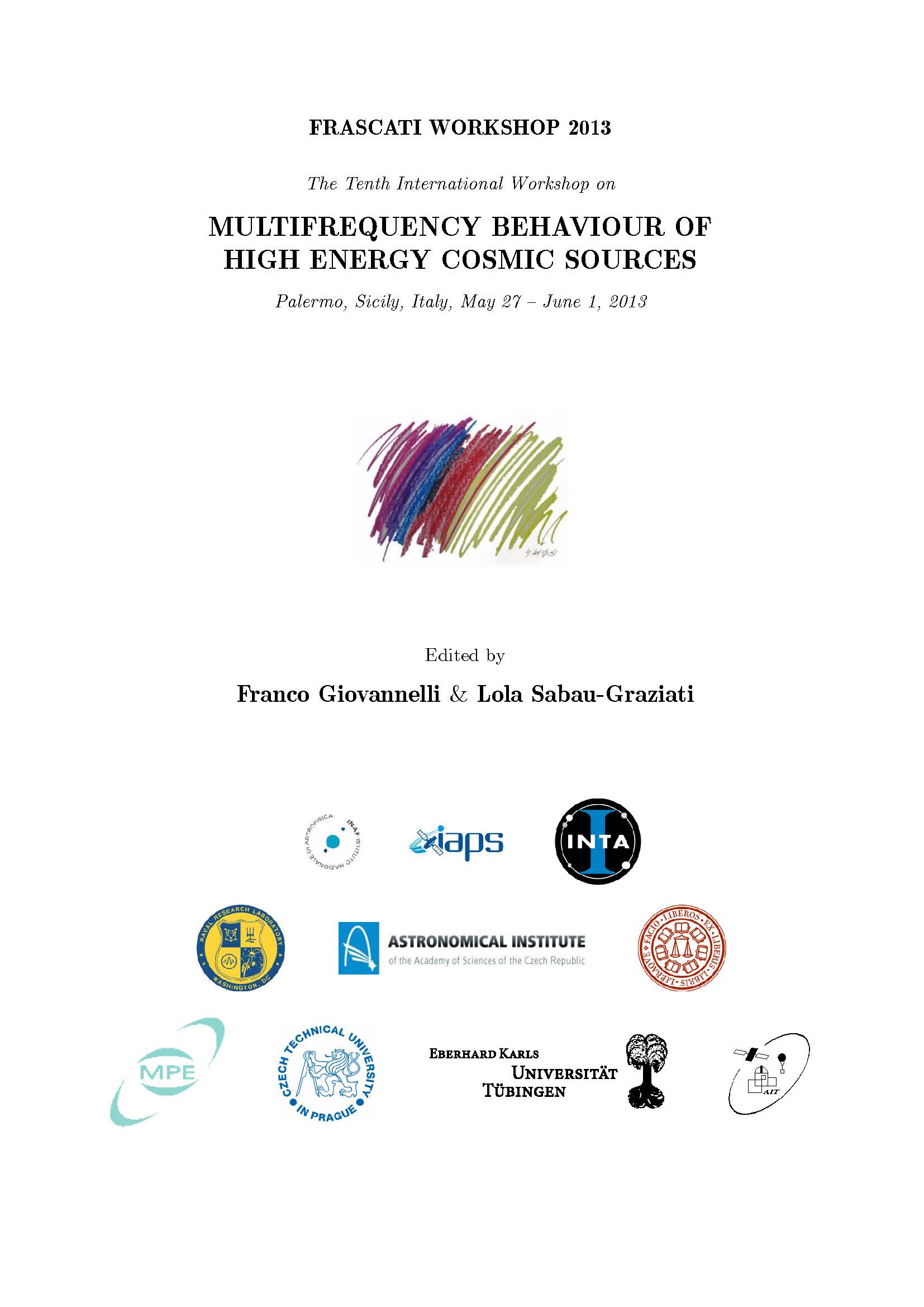X-Ray and Near-Infrared Spectroscopy of Dim X-Ray Point Sources Constituting the Galactic Ridge X-Ray Emission
DOI:
https://doi.org/10.14311/APP.2014.01.0222Abstract
We present the results of X-ray and Near-Infrared observations of the Galactic Ridge X-ray Emission (GRXE). We extracted 2,002 X-ray point sources in the Chandra Bulge Field (l =0°.113, b = 1°.424) down to ~10-14.8 ergscm-2s-1 in 2-8 keV band with the longest observation (900 ks) of the GRXE. Based on X-ray brightness and hardness, we classied the X-ray point sources into three groups: A (hard), B (soft and broad spectrum), and C (soft and peaked spectrum). In order to know populations of the X-ray point sources, we carried out NIR imaging and spectroscopy observation. We identied 11% of X-ray point sources with NIR and extracted NIR spectra for some of them. Based on X-ray and NIR properties, we concluded that non-thermal sources in the group A are mostly active galactic nuclei and the thermal sources are mostly white dwarf binaries such as cataclysmic variables (CVs) and Pre-CVs. We concluded that the group B and C sources are X-ray active stars in flare and quiescence, respectively.Downloads
Published
Issue
Section
License
Copyright notice
Authors who publish with this journal agree to the following terms:
1. Authors retain copyright and grant the journal the right of the first publication with the work simultaneously licensed under a Creative Commons Attribution License that allows others to share the work with an acknowledgement of the work's authorship and initial publication in this journal.
2. Authors are able to enter into separate, additional contractual arrangements for the non-exclusive distribution of the journal's published version of the work (e.g., to post it to an institutional repository or to publish it in a book), with an acknowledgement of its initial publication in this journal.
3. Authors are permitted and encouraged to post their work online (e.g., in institutional repositories or on their website) prior to and during the submission process, as it can lead to productive exchanges as well as earlier and greater citation of the published work (See The Effect of Open Access).


